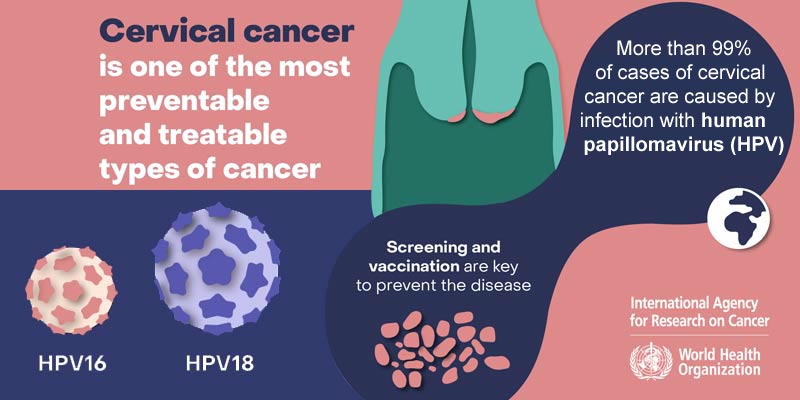- India
- Feb 02
Explainer - What is cervical cancer?
• According to the latest estimates of the International Agency for Research on Cancer (IARC), the World Health Organization (WHO)’s cancer agency, cervical cancer was the eighth most commonly occurring cancer globally and the ninth leading cause of cancer death.
• It accounted for 661,044 new cases and 348,186 deaths in 2022.
• It is the most common cancer in women in 25 countries, many of which are in sub-Saharan Africa.
Cervical cancer
• Cervical cancer develops in a woman’s cervix (the entrance to the uterus from the vagina).
• Cervical cancer starts in the cells of the cervix.
• The cervix connects the uterus to the vagina (birth canal).
• Cervical cancer usually develops slowly over time. Before cancer appears in the cervix, the cells of the cervix go through changes known as dysplasia, in which abnormal cells begin to appear in the cervical tissue. Over time, if not destroyed or removed, the abnormal cells may become cancer cells and start to grow and spread more deeply into the cervix and to surrounding areas.
• Almost all cervical cancer cases are linked to infection with high-risk human papillomaviruses (HPV).
• HPV is a common sexually transmitted infection.
• Although most infections with HPV resolve spontaneously and cause no symptoms, persistent infection can cause cervical cancer in women.
• Cervical cancer is the most common type of cancer caused by HPV.
• Effective primary (HPV vaccination) and secondary prevention approaches (screening for, and treating precancerous lesions) will prevent most cervical cancer cases.
• When diagnosed, cervical cancer is one of the most successfully treatable forms of cancer, as long as it is detected early and managed effectively.
• With a comprehensive approach to prevent, screen and treat, cervical cancer can be eliminated as a public health problem.
• In May 2018, the WHO Director-General announced a global call for action to eliminate cervical cancer, underscoring renewed political will to make elimination a reality and calling for all stakeholders to unite behind this common goal.
• In August 2020 the World Health Assembly adopted the Global Strategy for cervical cancer elimination.
Cervical cancer cases in India
• Cervical cancer ranks as the second most prevalent cancer in India.
• It accounts for nearly one-fourth of the world’s cervical cancer deaths despite being largely preventable.
• Current estimates indicate that every year approximately 1.25 lakh women are diagnosed with cervical cancer, and over 75,000 die from the disease in India.
• It is estimated that HPV types 16 and 18 (HPV-16 and HPV-18) together contribute to approximately 70 per cent of all invasive cervical cancer cases worldwide.
• The most promising intervention for preventing cervical cancer is vaccination against human papillomavirus (HPV).
• Presenting the Interim Budget for 2024-2025, Union Finance Minister Nirmala Sitharaman said the government will encourage vaccination against cervical cancer for girls in the 9-14 age group.
• Public health is a state subject under the State List of the Seventh Schedule to the Constitution.
• In December 2022, the Centre urged all states and Union Territories to create awareness on prevention of cervical cancer and the importance of HPV vaccine among girl students across the country.
Manorama Yearbook app is now available on Google Play Store and iOS App Store

